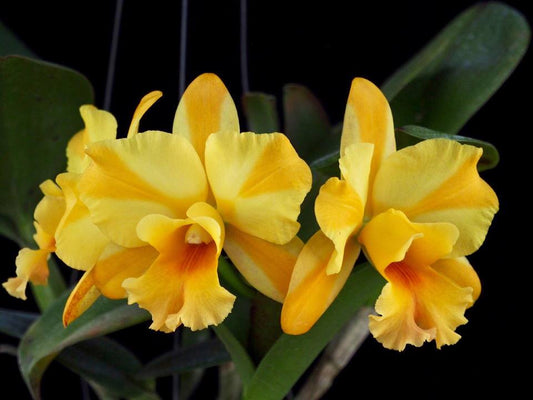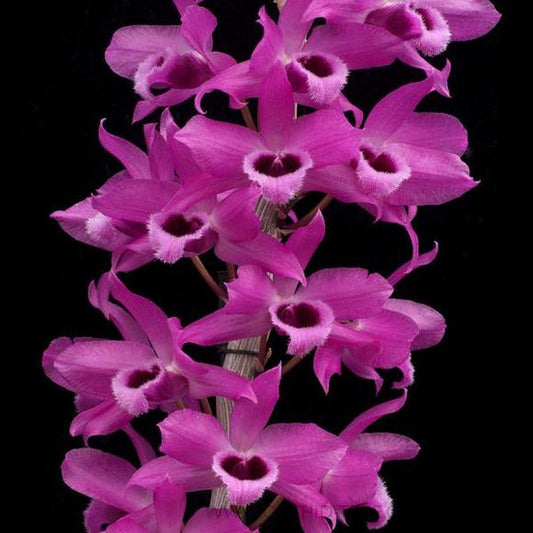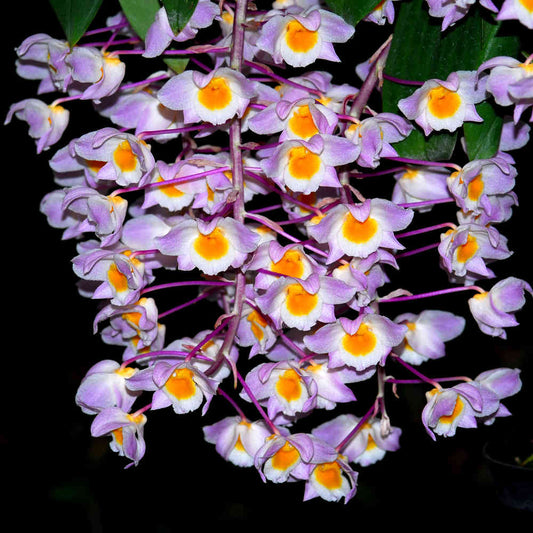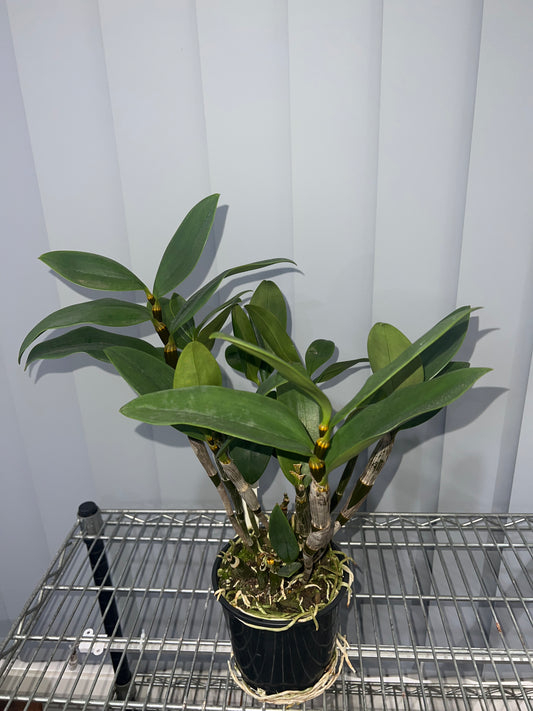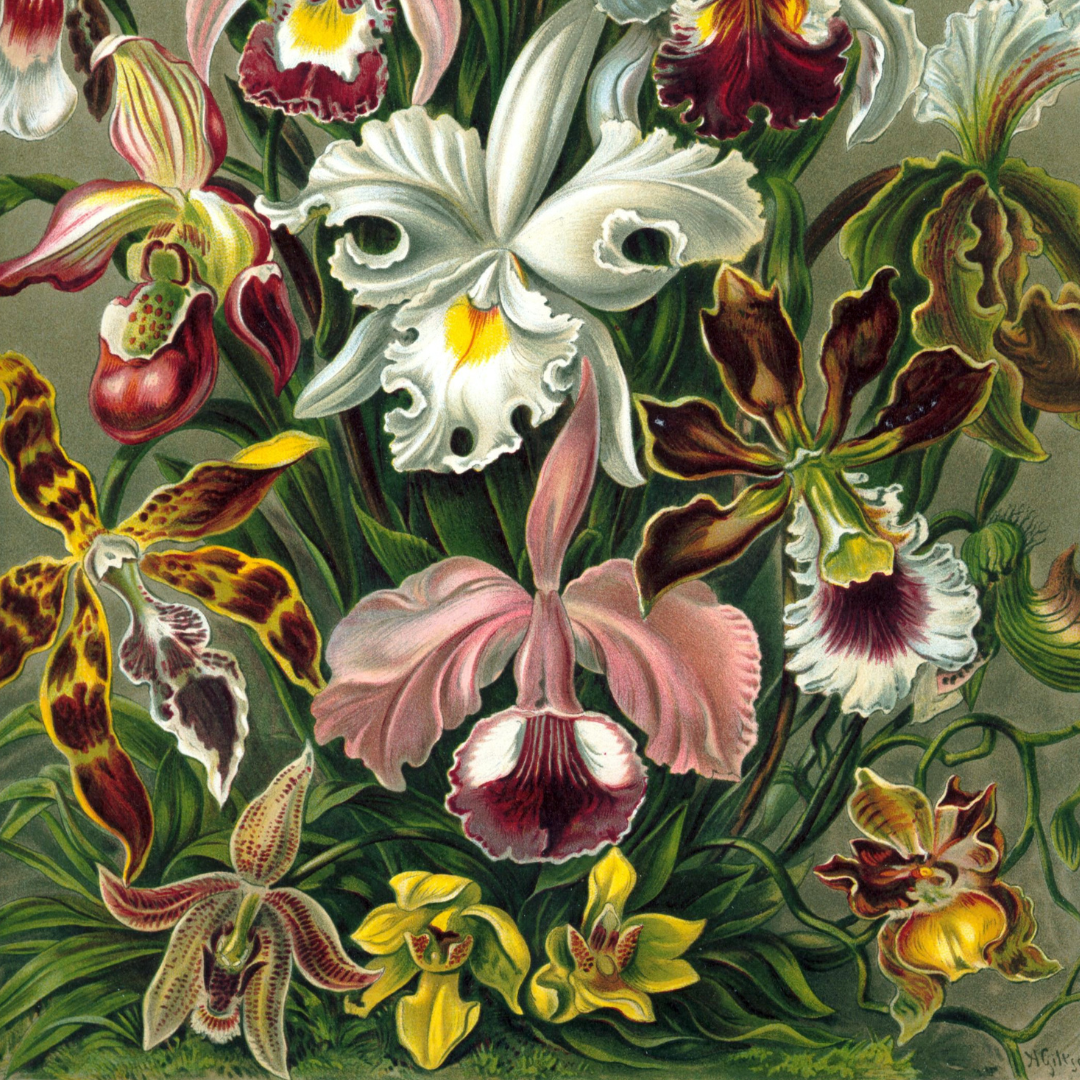Phalaenopsis Care Guide
Water
How often you water will depend on the potting medium. Bark retains less water than moss. If your orchid is potted in bark watering once a week is generally sufficient. If your plant is potted in moss, water when the top feels dry. Summer months will need more frequent watering, winter will need less.
It is best to water in the morning. Place the plant in the sink and use tepid water. Do not use salt-softened or distilled water. Let the water run through the plant for a minute or so. Be sure to let the plant drain completely.
If any water remains in the crown (where the leaves join in the centre) use a paper towel to blot the water to avoid crown rot.
Light
Phalaenopsis are ‘low’ light orchids. They grow beautifully in an east window and can be grown in a south or west window if protected by a sheer curtain. A phal’s leaves should be olive green. If they are darker it means the plant is not getting enough light; red tinged leaves mean the plant is getting too much light. Once the plant is in bloom you can place it anywhere in your home out of direct sunlight. If your plant does not re-bloom, increase the amount of light that it receives.
Continue watering and fertilizing while waiting for the blooming cycle to begin!
Temperature
Phals are easy to grow because they enjoy the same temperatures we do – above 16º C at night and a range of 21º C to 27º C or higher during the day. 35º C is the maximum temperature recommendation. Keep in mind that temperatures close to the window on a windowsill will be colder or hotter than your general house temperature. Fluctuating temperatures can cause bud drop on plants with buds ready to open.
Fertilizer
Any balanced orchid fertilizer (look at the numbers on the container, 20-20-20, etc.) can be used to fertilize your orchid. Feeding weakly (half strength) weekly works well. Once a month, use clear water to flush any accumulated salts from the potting mix.
Humidity
Use a shallow tray of pebbles filled with water to increase humidity around your plants. Be sure the pot does not sit in water as this will rot the roots.
Cutting the spike
When the blooms are finished, you can cut the spike down to the level of the leaves and the plant will bloom with larger flowers and a strong stem within a year. You can also cut off the stem leaving two nodes (those little brown lines on the stem below where the flowers were) on the stem. One of these nodes will then initiate and generally produce flowers within eight to 12 weeks.
Continue watering and fertilizing while you are waiting for the blooming cycle to begin again! Repotting is usually done every one to three years.

